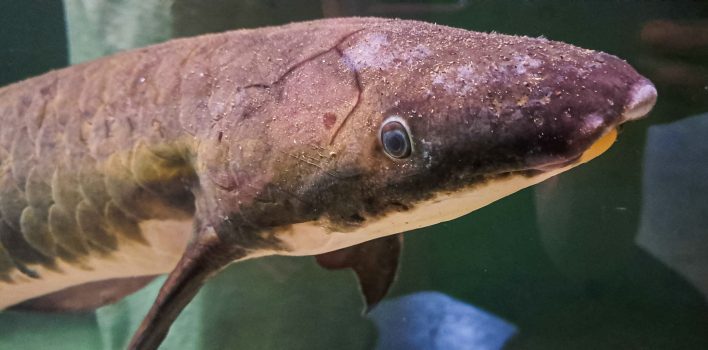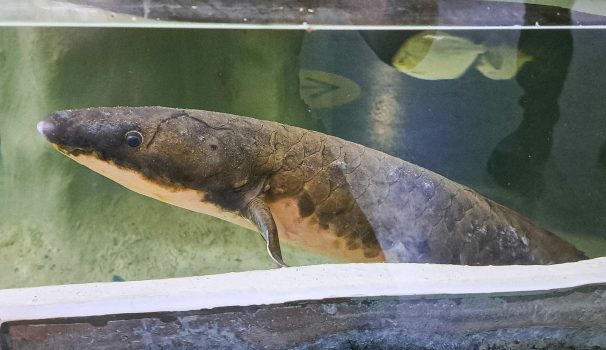Australian Lungfish
Common Name: Australian Lungfish
Scientific Name: Neoceratodus forsteri
Names: Gregory
Locations: Whitby


Diet
Australian Lungfish are primarily carnivorous when young, feeding on small invertebrates, insects, and crustaceans. As they mature, they become more omnivorous, consuming a wider variety of prey including fish, amphibians, and plant matter.
Average lifespan
Australian Lungfish are known for their remarkable longevity and can live for over 100 years in the wild.
Size
Australian Lungfish are large, elongated fish. They typically grow to lengths of about 1 to 1.5 meters (3.3 to 4.9 feet), although individuals exceeding 2 meters (6.6 feet) have been reported.
Weight
Adult Australian Lungfish can weigh anywhere from 20 to 40 kilograms (44 to 88 pounds).
About
Australian Lungfish are native to the rivers and lakes of eastern Australia, particularly found in the Burnett and Mary River systems in Queensland. They are one of only six extant species of lungfish in the world and are often considered living fossils due to their ancient lineage.
Size and behavior
Australian Lungfish have adapted to survive in low-oxygen environments by possessing a unique respiratory system that allows them to breathe air. They have elongated bodies with paired fins and a single lung-like organ, which they use to take in oxygen from the air. They are primarily nocturnal and are most active during the night.
Diet and nutrition
Australian Lungfish have a varied diet that changes as they mature. Juveniles primarily feed on small invertebrates and crustaceans, while adults consume a wider variety of prey including fish, amphibians, and plant matter. They use their strong jaws and sharp teeth to capture and consume prey.
Conservation status
Australian Lungfish are currently listed as “Least Concern” by the International Union for Conservation of Nature (IUCN). However, they face threats from habitat loss, pollution, and overfishing in some areas. Conservation efforts focused on habitat protection, water quality management, and sustainable fishing practices are important for the long-term survival of Australian Lungfish.
Fun fact
Australian Lungfish are often referred to as “living fossils” because they have remained relatively unchanged for over 100 million years, making them one of the oldest extant vertebrate species on the planet. They are considered a living link to the early evolution of vertebrates and provide valuable insights into the history of life on Earth.
Call or visit your local Reptilia Facility to learn how you can adopt one of these amazing reptiles.










